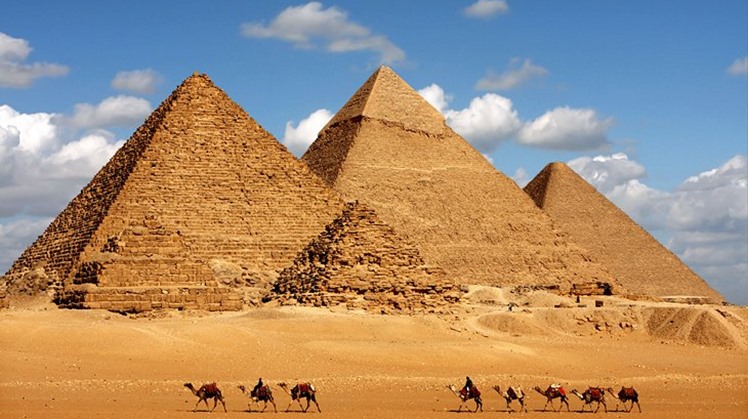The construction of the pyramids remained a mystery for thousands of years until a multinational team of ten researchers from France, Egypt and China decided to study how the ancient Egyptians moved the massive granite and limestone slabs that made up the pyramids at Giza including the Colossal Pyramid of Khufu, one of the Seven Wonders of the World.
Using fossilized pollen particles, scientists have proven the existence of a missing tributary of the Nile, which once connected the Great River to Giza where researchers believe the Egyptians harnessed this water mass in engineering a complex of canals and basins leading to the base of the Giza plateau.
Exactly how the pyramids were built has been an archaeological mystery, as it seemed so miraculous that theories about aliens have been ingrained in people's minds and why the pyramid's stones weigh at least two tons, and in 2019, Discovery hypothesized that the ancient Egyptians intentionally used wet sand that Huge stones helped slide across the ground from the quarries to the construction site.
Led by the French environmental geographer Hadeer Shisha, the international team's latest study in the Proceedings of the National Academy of Sciences began by acknowledging that it was an already well-established assumption that Egyptian engineers created some kind of canal from the Nile to move the pyramid's stones, but until now, historians have had no evidence for "when." Where and how these ancient landscapes developed.
The researchers studied five sediment samples extracted from the Giza Flood Plain in 2019 to analyze "patterns of pollen-derived vegetation" and "reconstruct 8,000-year-old riverine history of the Nile in this area."
By combining this work with previous studies in the rock layers around the pyramids, archaeologists have concluded that there was a tributary from the Nile River that reached the pyramids with a high water level during the reigns of Khufu, Khafre and Menkaure.
In a report on the study, the New York Times noted that the origins of the team's discovery can be traced back even earlier, to 2013, when papyrus scraps appeared around the Red Sea and described previously unknown documents from an official named Merer who attempted to ship limestone to Giza along the Nile River.
"When I read about it, I was very interested because this confirms that the materials for the pyramid's construction were transported over water," Shisha told The Times.
Phys.org added that researchers discovered evidence of numerous fossilized pollen from flowering grasses and marsh plants that usually line both rivers and lakes, providing evidence of sustainable water levels at the Khufu tributary and shortly after King Tut's rule, those decreased levels. The land dried up completely, leaving behind a mystery that may now be closer to being solved.
 Sun, Sep. 25, 2022
Sun, Sep. 25, 2022